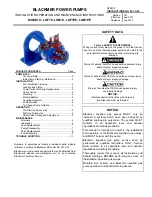
– 13 –
Hydro Unit
Installation Manual
Electrical connection to Hydro Unit
• Remove the front cover and the electrical box cover
from the Hydro Unit.
• The Hydro Unit power cable must be sized in
accordance with refer to “Electrical supply/cable
specifications”.
• Connect the Hydro Unit power cable to Terminal 03
as shown below.
• Ensure the Hydro Unit power cable is secured using
the cable clamp fitted in the electrical box.
• Ensure the Hydro Unit power cable connection
terminals are tight.
Outdoor Unit to Hydro Unit electrical
connection
▼
Fig.7-20
• Ensure electrical circuits are isolated before
commencing work.
• The Outdoor Unit to Hydro Unit interconnecting
cable must be sized in accordance with refer to
“Electrical supply/cable specifications”.
• Connect the Outdoor Unit to Hydro Unit
interconnecting cable as shown in the diagram
above.
• Ensure the Outdoor Unit to Hydro Unit
interconnecting cable is secured using the cable
clamp fitted in the electrical box.
• Ensure the Outdoor Unit to Hydro Unit
interconnecting cable connection terminals are tight.
L N
L1 L2 L3 N
TB03
TB03
▼
Fig.7-19
Leakage
breaker
30 mA
Leakage
breaker
30 mA
Input power
220-240 V
50 Hz
Backup heater
220-240 V ~ type
(3 kW type)
Backup heater
380-415 V 3N~
type
(6,9 kW type)
Input power
380-415 V
3N~ 50 Hz
N
L
1
3
2
1
3
2
TB
01
Leakage
breaker
30 mA
Input
power
220-240 V
~ 50 Hz
Outdoor Unit
Hydro Unit
Outdoor Unit
Electrical connection for external booster
heater
CAUTION
• The maximum current available from the
booster heater output is 1
A. Do not connect
the booster heater directly to CN23 on the
Hydro Unit. A separate contactor, supplied
locally, must be used to supply the booster
heater.
• The booster heater can be installed only for room
heating and cannot be used for hot water supply.
• Install the booster heater downstream of the 3-way
valve on the Hydro Unit side.
The booster heater is an external heater, supplied
locally, used to assist the Hydro Unit during low
ambient conditions.
• The AC230
V 1
A output from the Hydro Unit must only
be used to energize an external contactor. (Supplied
locally)
• The output from the Hydro Unit is only enabled when
the outdoor air temperature is less than -20°C.(*)
• Ensure the external booster heater is installed and set
up in accordance with all Local, National and
International regulations.
(*) For HWT-110, it is less than -25°C.
• Connect the external booster heater to the Hydro
Unit in accordance with the diagram shown below.
• Connect the coil, of the field supplied contactor, to
terminals 5 & 6 on CN23. The contactor will energize
in the event of low ambient conditions.
• A separate dedicated electrical supply must be used
for the external booster heater. This must be
connected through the contacts on the field supplied
contactor.
▼
Fig.7-21
Electrical connection for external additional
pumps
• The Hydro Unit has the facility to connect an
additional circulating pump, if required, into the
heating or cooling system.
• There is an output available from the Hydro Unit.
AC230 V 1 A (maximum) is available from each
output. The output for each additional pump is
synchronized with the operation of the main
circulating pump inside the Hydro Unit.
• Connect the additional pumps as shown in the
diagram below.
• Connect external pump 1 to terminals 1 & 2 on
CN23.
• Install external pumps so that their motive power
does not affect the internal pump.
▼
Fig.7-22
1
2
3
4
5
6
7
8
9
CN23
Booster Heater
1
2
3
4
5
6
7
8
9
02
CN23
Pump
25-EN
26-EN
Summary of Contents for HWT-1101XWHM3W-E
Page 39: ...2F30151001 1 ...















































